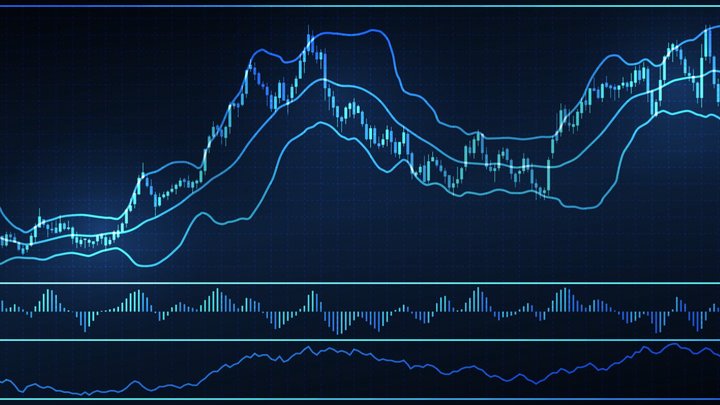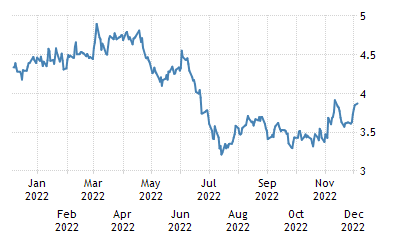
Pips in Forex are small changes in the exchange rate of two currencies. Even small changes can have big consequences for your trading account. Understanding pips is key to understanding micro-currency movements. It also allows you the ability to manage risk.
Pip values can be calculated using three elements. You need to know the number, lot number, and exchange rate. With the first two, you're likely to have an easy time calculating the value of the pip. For the third element, you'll need a more nuanced calculation. A few brokers offer 4-digit rates to better reflect the complexity of exchange rate fluctuations.
Pip functions include illustrating the most significant change to a currency pair. You can make better trades if you know how many pips are in each lot. You'll also be able calculate how much equity your can lose. Similarly, knowing the number of pips in a particular lot will also give you a better understanding of how to manage your risks.

There are two main types pips. One is the smallest change in the exchange rate, and the other is the largest. This is the easiest and most intuitive to use. The most important pips can be more difficult and take a lot of time. A special calculator makes it easier to calculate a pip. This is typically done by a service provider.
The second function is to calculate and estimate the bid/ask spread. This is an important metric for successful trades. Depending on your broker, the spread can be measured in pips, points or even dollars. By measuring the bid-ask spread, you'll get a better sense of where you stand in the price equation. This will allow you to assess the potential impact of future moves.
Although a calculator is the best way to calculate pip values, it's still possible to do it manually. Many traders prefer a pip formula that is more robust and flexible. You may still need to use the old-school method of counting pip depending on how your broker rates.
This will give you an advantage over your competition by knowing the most important Forex pivot points. A trader's ability use the correct pips to make a trade in a given market will depend on how well they understand risk management and how committed they are to their strategy. Knowing the pips of Forex will help you to execute your trades in a timely and profitable manner.

It is a good rule of thumb to determine how many pips are in a lot that are the largest relative to the price movement. Divide the number you have by the lot size. While you will most likely be looking at a penny a pip, it is possible that the size or currency pair you are working with will impact the size of the pip.
FAQ
How are securities traded?
The stock exchange is a place where investors can buy shares of companies in return for money. To raise capital, companies issue shares and then sell them to investors. Investors can then sell these shares back at the company if they feel the company is worth something.
The supply and demand factors determine the stock market price. The price of stocks goes up if there are less buyers than sellers. Conversely, if there are more sellers than buyers, prices will fall.
There are two methods to trade stocks.
-
Directly from your company
-
Through a broker
What are some of the benefits of investing with a mutual-fund?
-
Low cost - buying shares directly from a company is expensive. A mutual fund can be cheaper than buying shares directly.
-
Diversification - most mutual funds contain a variety of different securities. One security's value will decrease and others will go up.
-
Professional management – professional managers ensure that the fund only purchases securities that are suitable for its goals.
-
Liquidity - mutual funds offer ready access to cash. You can withdraw your funds whenever you wish.
-
Tax efficiency – mutual funds are tax efficient. So, your capital gains and losses are not a concern until you sell the shares.
-
No transaction costs - no commissions are charged for buying and selling shares.
-
Mutual funds can be used easily - they are very easy to invest. You only need a bank account, and some money.
-
Flexibility – You can make changes to your holdings whenever you like without paying any additional fees.
-
Access to information- You can find out all about the fund and what it is doing.
-
Investment advice – you can ask questions to the fund manager and get their answers.
-
Security - Know exactly what security you have.
-
Control - The fund can be controlled in how it invests.
-
Portfolio tracking - you can track the performance of your portfolio over time.
-
Ease of withdrawal - you can easily take money out of the fund.
What are the disadvantages of investing with mutual funds?
-
Limited investment options - Not all possible investment opportunities are available in a mutual fund.
-
High expense ratio: Brokerage fees, administrative fees, as well as operating expenses, are all expenses that come with owning a part of a mutual funds. These expenses can impact your return.
-
Lack of liquidity: Many mutual funds won't take deposits. They must be purchased with cash. This limit the amount of money that you can invest.
-
Poor customer service: There is no single point of contact for mutual fund customers who have problems. Instead, you will need to deal with the administrators, brokers, salespeople and fund managers.
-
Ridiculous - If the fund is insolvent, you may lose everything.
What is a Bond?
A bond agreement between two people where money is transferred to purchase goods or services. It is also known simply as a contract.
A bond is typically written on paper, signed by both parties. This document details the date, amount owed, interest rates, and other pertinent information.
A bond is used to cover risks, such as when a business goes bust or someone makes a mistake.
Bonds are often used together with other types of loans, such as mortgages. This means that the borrower must pay back the loan plus any interest payments.
Bonds can also be used to raise funds for large projects such as building roads, bridges and hospitals.
When a bond matures, it becomes due. This means that the bond owner gets the principal amount plus any interest.
If a bond does not get paid back, then the lender loses its money.
Can bonds be traded
The answer is yes, they are! As shares, bonds can also be traded on exchanges. They have been traded on exchanges for many years.
The only difference is that you can not buy a bond directly at an issuer. They can only be bought through a broker.
It is much easier to buy bonds because there are no intermediaries. This also means that if you want to sell a bond, you must find someone willing to buy it from you.
There are several types of bonds. While some bonds pay interest at regular intervals, others do not.
Some pay interest quarterly while others pay an annual rate. These differences make it possible to compare bonds.
Bonds are great for investing. If you put PS10,000 into a savings account, you'd earn 0.75% per year. The same amount could be invested in a 10-year government bonds to earn 12.5% interest each year.
If all of these investments were accumulated into a portfolio then the total return over ten year would be higher with the bond investment.
Statistics
- For instance, an individual or entity that owns 100,000 shares of a company with one million outstanding shares would have a 10% ownership stake. (investopedia.com)
- US resident who opens a new IBKR Pro individual or joint account receives a 0.25% rate reduction on margin loans. (nerdwallet.com)
- Our focus on Main Street investors reflects the fact that American households own $38 trillion worth of equities, more than 59 percent of the U.S. equity market either directly or indirectly through mutual funds, retirement accounts, and other investments. (sec.gov)
- Ratchet down that 10% if you don't yet have a healthy emergency fund and 10% to 15% of your income funneled into a retirement savings account. (nerdwallet.com)
External Links
How To
How to Trade in Stock Market
Stock trading is a process of buying and selling stocks, bonds, commodities, currencies, derivatives, etc. Trading is a French word that means "buys and sells". Traders buy and sell securities in order to make money through the difference between what they pay and what they receive. It is one of the oldest forms of financial investment.
There are many methods to invest in stock markets. There are three types of investing: active (passive), and hybrid (active). Passive investors watch their investments grow, while actively traded investors look for winning companies to make a profit. Hybrid investors use a combination of these two approaches.
Index funds track broad indices, such as S&P 500 or Dow Jones Industrial Average. Passive investment is achieved through index funds. This is a popular way to diversify your portfolio without taking on any risk. You just sit back and let your investments work for you.
Active investing is the act of picking companies to invest in and then analyzing their performance. Active investors will analyze things like earnings growth rates, return on equity and debt ratios. They also consider cash flow, book, dividend payouts, management teams, share price history, as well as the potential for future growth. They then decide whether or not to take the chance and purchase shares in the company. If they believe that the company has a low value, they will invest in shares to increase the price. However, if they feel that the company is too valuable, they will wait for it to drop before they buy stock.
Hybrid investments combine elements of both passive as active investing. One example is that you may want to select a fund which tracks many stocks, but you also want the option to choose from several companies. This would mean that you would split your portfolio between a passively managed and active fund.